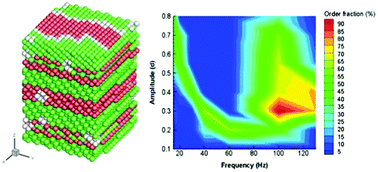Self-assembly of granular spheres under one-dimensional vibration
Abstract
The self-assembly of uniform granular spheres is related to the fundamentals of granular matter such as the transitions of phases, order/disorder and jamming states. This paper presents a DEM (discrete element method) study of the continuous self-assembly of uniform granular spheres from random close packing (RCP) to partially and nearly fully ordered packings under one-dimensional (1D) sinusoidal vibration without other interventions. The effects of the vibration amplitude and frequency are investigated in a wide range. The structures of the packings are characterized in terms of packing fraction and other microscopic structural parameters, including the coordination number, bond-orientational orders, and, in particular, ordered clusters, by adaptive common neighbor analysis (a-CNA). It is shown that 1D vibrations can also lead to the self-assembly of uniform granular spheres with packing fractions exceeding the RCP limit, and FCC (face centered cubic) and HCP (hexagonal close packed) structures coexist in the self-assembled packings while their total fraction can reach nearly 100%. The structures of these packings can be better correlated with the vibration velocity amplitude rather than the commonly used vibration intensity. The dynamics of such self-assembly is also preliminarily analyzed. Our study not only presents the conditions for the self-assembly of uniform granular spheres under 1D vibration, but also characterizes the order–disorder transitions during the process, which can improve our understanding of the fundamentals of granular materials and jamming states.



 Please wait while we load your content...
Please wait while we load your content...